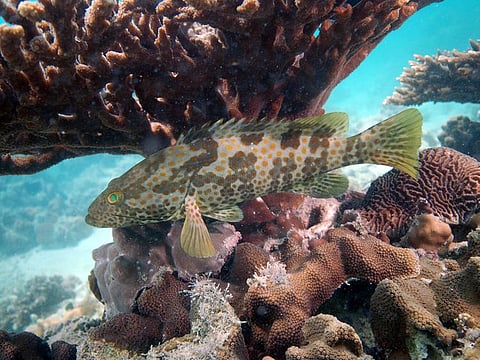Abu Dhabi researchers discover alarming changes in Arabian Gulf waters
NYUAD’s ACCESS team finds worrying decline in oxygen concentrations

Abu Dhabi: A team of researchers in Abu Dhabi studying the evolution of dissolved oxygen in the Arabian Gulf for over three decades has found a series of changes that can lead to fish mortality, fish migration and loss of biodiversity.
The researchers at the NYU Abu Dhabi’s Arabian Centre for Climate and Environmental Sciences (ACCESS) found a significant decline in oxygen concentrations, along with an expansion of lower oxygen levels near the bottom of the Gulf in certain seasons, known as the seasonal near-bottom hypoxic zone.
These changes are altering the Arabian Gulf’s physical and “biogeochemical” environment, and can negatively affect ecosystems and fisheries in the region, they warned.
Research model
In the paper titled ‘Recent expansion and intensification of hypoxia in the Arabian Gulf and its drivers’, published in the journal ‘Frontiers in Marine Science’, the researchers used an ocean model to simulate hypoxia near the sea bottom from 1982 to 2010. The results indicated an expansion and intensification of hypoxia in the central Gulf, accompanied by a lengthening of the hypoxic season.
Because of the scarcity of observations of the area, the dynamics of hypoxia in the Gulf remain largely unknown. This is the first study to model the biogeochemistry of the Gulf, according to NYU Abu Dhabi. This is also the first time, it added, that researchers have explored the drivers of large-scale hypoxia in the Gulf and its seasonal and long-term variability.
Hypoxic stress
The expansion and intensification of hypoxia in the Gulf has the potential to alter its biogeochemistry and marine ecosystems in various ways. Hypoxia can cause fish mortality, lead to a loss of marine biodiversity, and may also cause distribution shifts as fish migrate to avoid hypoxic stress. This can alter the community structure of reef ecosystems, and increase the vulnerability of the Gulf coral reefs to ongoing warming and climate change.
Growing concern
“Oxygen is an essential molecule, vital for the survival of the marine organisms and fish populations in the area. Our team found that the seasonal hypoxic zone in the Arabian Gulf has grown by over 50 per cent since the 1980s, and it is now persisting for several more months each year compared with several decades ago,” said lead author Zouhair Lachkar, a senior research scientist at ACCESS.
“The expansion and intensification of these low-oxygen waters in the central Gulf represents a growing threat to regional fisheries, with this hypoxic zone growing steadily towards the UAE’s offshore fishing grounds. We will continue to study the evolution of this phenomenon and will work with the relevant government agencies to assess this risk going forward as climate change continues to put pressure on our marine systems,” said Dr John Burt, associate professor of Biology at NYUAD, and report co-author.
Sign up for the Daily Briefing
Get the latest news and updates straight to your inbox



![The family involved in the accident was from Kerala.[Illustrative image]](http://media.assettype.com/gulfnews%2F2025-12-27%2Fbo5oadv9%2Fpolice.jpg?w=320&auto=format%2Ccompress&fit=max)